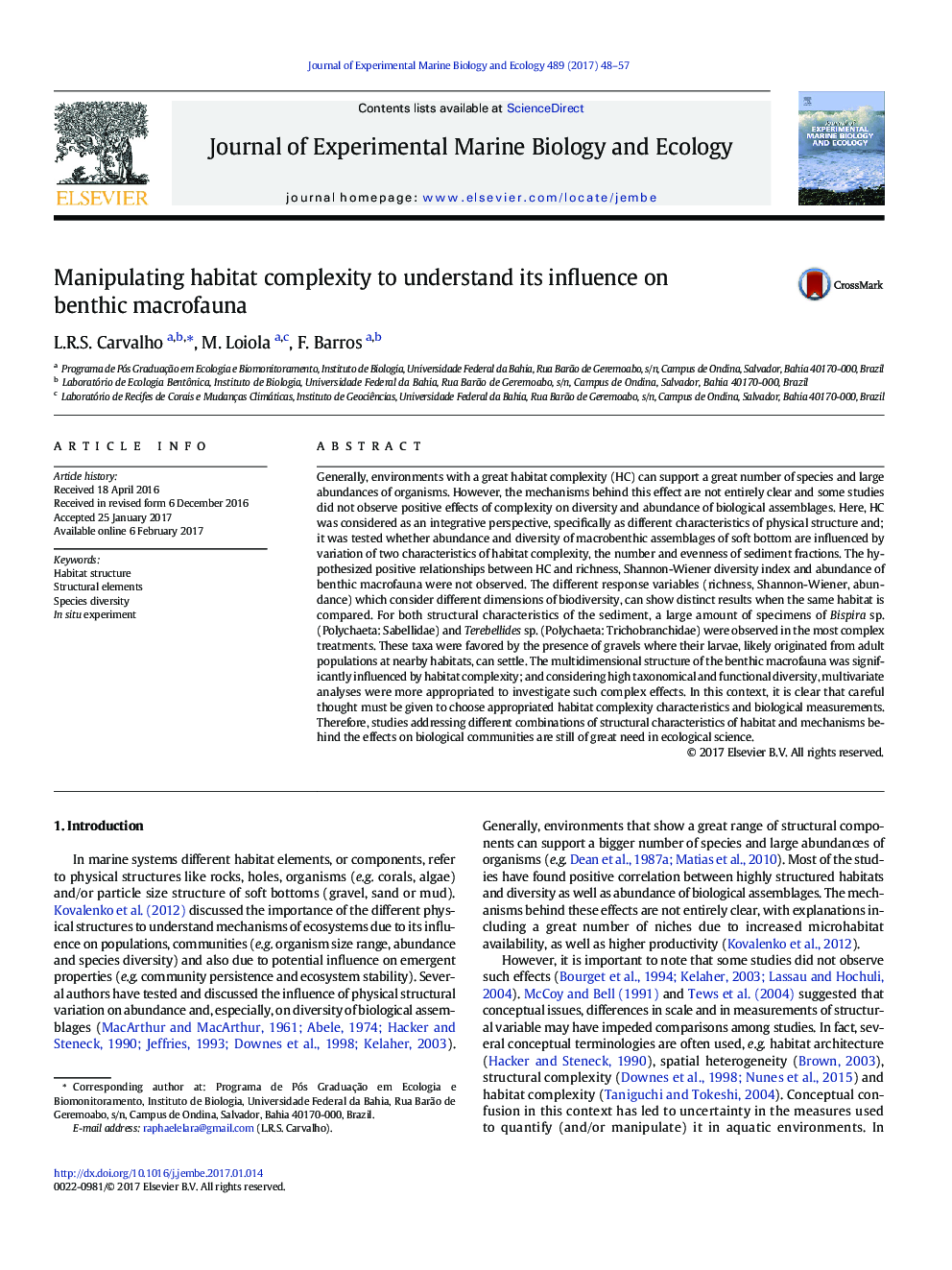| Article ID | Journal | Published Year | Pages | File Type |
|---|---|---|---|---|
| 5744553 | Journal of Experimental Marine Biology and Ecology | 2017 | 10 Pages |
â¢Univariate responses of benthic macrofauna didn't show a positive relationship with the increase of habitat complexity.â¢Different response variables showed distinct results even when the same habitat was compared.â¢The abundance of different taxa and the composition of the macrofauna were significantly influenced by habitat complexity.â¢More complex sediments favored the presence of suspension-feeders.
Generally, environments with a great habitat complexity (HC) can support a great number of species and large abundances of organisms. However, the mechanisms behind this effect are not entirely clear and some studies did not observe positive effects of complexity on diversity and abundance of biological assemblages. Here, HC was considered as an integrative perspective, specifically as different characteristics of physical structure and; it was tested whether abundance and diversity of macrobenthic assemblages of soft bottom are influenced by variation of two characteristics of habitat complexity, the number and evenness of sediment fractions. The hypothesized positive relationships between HC and richness, Shannon-Wiener diversity index and abundance of benthic macrofauna were not observed. The different response variables (richness, Shannon-Wiener, abundance) which consider different dimensions of biodiversity, can show distinct results when the same habitat is compared. For both structural characteristics of the sediment, a large amount of specimens of Bispira sp. (Polychaeta: Sabellidae) and Terebellides sp. (Polychaeta: Trichobranchidae) were observed in the most complex treatments. These taxa were favored by the presence of gravels where their larvae, likely originated from adult populations at nearby habitats, can settle. The multidimensional structure of the benthic macrofauna was significantly influenced by habitat complexity; and considering high taxonomical and functional diversity, multivariate analyses were more appropriated to investigate such complex effects. In this context, it is clear that careful thought must be given to choose appropriated habitat complexity characteristics and biological measurements. Therefore, studies addressing different combinations of structural characteristics of habitat and mechanisms behind the effects on biological communities are still of great need in ecological science.
